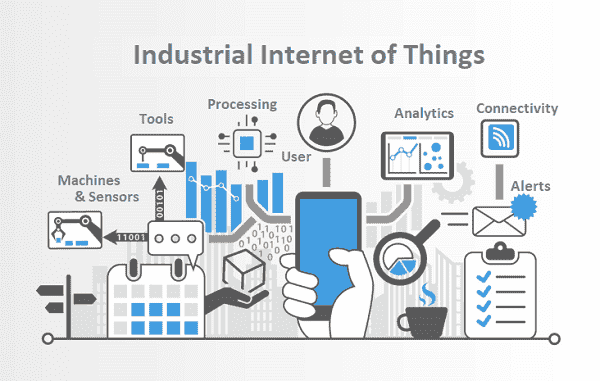The Internet of Things (IoT) is everywhere, particularly in our homes from voice assistants and smart bulbs to thermostats that learn user preferences and habits. But what the hype, hoopla and smart refrigerators don’t tell you is that IoT will actually pave the way to a much more interconnected world. It’s more than a watch counting steps and miles – IoT is about a connectivity revolution. It allows for unprecedented convenience and ushers in a new era of innovations.
A world of intelligence
Today’s smart home consists of voice-activated devices that can interface with some items and appliances but it’s only the start of what’s to come. In the not-too-distant future, everything in your home will be connected not only for simple commands but for intuitive solutions that intelligently react without the need for user input.
Freshly brewed coffee – a frequently cited feature of the smart home and IoT – is just the beginning. For example, when connected to a smart oven, a smartphone would know when its user wakes up and automatically begin the preheating process. This could be done without any form of privacy invasion. The oven would know when the alarm is scheduled to ring. It would then wait for confirmation – through an app or by detecting when the alarm is turned off – before preheating. This would make it easy to pop in a frozen croissants for a quick breakfast before work.
At the same time, a smart thermostat could automatically adjust to compensate for the increase in heat from the oven or lights could automatically turn on as well, but only in rooms that are about to be entered. Knowing when it’s almost time to leave for work, a connected car could automatically open the garage and start its engine. If left outside in the snow, the vehicle would know to start even sooner, providing enough time for icy windshields to melt and clear before it’s time to leave. The possibilities are endless and really show the power of a truly connected world.
Driving toward the future
IoT is going to have a big impact on mobility, but it will start long before fully autonomous vehicles are on our roads. As smart cities come online, drivers will gain access to more than real-time traffic information – they’ll know exactly which roads provide the fastest route. Traffic signal details will be sent directly to the car, which will share them with the driver. The car’s own details (such as speed and location) will be sent back to the traffic signal, allowing the two to interface. Then, if north and southbound traffic is light but eastbound traffic is picking up, the signal could automatically adjust to compensate, extending the green light for the greatest number of drivers.
When cars are capable of driving themselves, IoT-infused features would be taken to a whole other level. Instead of merely providing all of the smart city information to the driver, that info would go directly to the vehicle, which would take the most efficient, time-saving route to and from work.
Autonomous vehicles will allow occupants to use the commute to do whatever they want, and those things could be carried over when returning home. If watching a movie, for example, it could be instantaneously transferred (from a device or in-car display) to a living room TV, allowing the viewer to resume with the press of a single button.
Shop smarter than ever before
One of the most exciting parts of IoT is how it will transform the world of retail. Right now, it’s easy to walk into a store and leave without one of the key items you came to get. Maybe the items were misplaced or you simply forgot them. In any case, this will inevitably lead to an extra trip back to the store.
With IoT, each item could have an RFID (radio-frequency identification) tag that pings your phone as soon as you approach. Many stores already use these tags for security purposes or in their warehouses, so why not expand on this functionality? Grocery stores could install LED signs that flash not only for sales but for items added to your shopping list. Additionally, imagine the power of a retailer that uses large screens to highlight items that customers recently viewed online. Sensors could connect with each shopper’s phone to view their store history and tailor the displayed items accordingly. This would bring one of the best components of dot-com shopping to physical retail.
Surely there may be concerns about consumer adoption. While smart thermostats have turned off some individuals over fears of privacy, smart meters – electric, water or gas – have caused a stir over the increase in radiofrequency exposure. Consumers have a right to be concerned about these potential issues and should absolutely insist that manufacturers rectify them before they are welcomed into our homes.
Other consumers are eager to be early adopters regardless, embracing technological innovations first and worrying about any possible consequences later. Both groups are important to the future of technology: the latter allows innovations to flourish, the former ensures that they are refined and improved to meet all consumer needs.
Some subtle innovations are already being deployed to great effect, bringing retail into the 21st century. But it’s not just what you buy and how you find it in store – the future also involves how you pay and exit. One new concept, dubbed “just walk out,” allows consumers to buy whatever they want without ever having to wait in line for a cashier – Amazon Go has been trialing this with some success. In fact, checkouts have been eliminated entirely. Using a mix of smartphone technology, in-store sensors and artificial intelligence, “just walk out” is several steps above the self-checkout terminals that have been added to most retailers. As a smart store, the entire retail establishment can determine which items have been placed in a cart, as well as those that have been placed back on the shelf. This technology will only get better with time, providing even more opportunities for intelligent shopping experiences.
The Internet of absolutely everything
IoT is mentioned so frequently, it might come across as just another type of marketing speak. But there is truth to the hype, and there are no limits to what the “everything” in IoT will entail. There are also no limits to how consumers will respond. Some will inevitably worry about privacy or security. Others might be concerned about the possible health risks, such as those associated with smart meters. Whether or not these concerns are overblown remains to be seen, but that’s why tech makers must continue to be open and honest about how their technology works. The connectivity revolution depends on it – and the future growth of IoT demands it.


